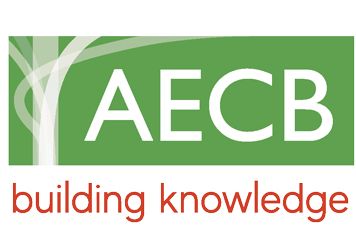
Draft new Part L energy efficiency regulations “disappointing”, critics say
This article was originally published in issue 32 of Passive House Plus magazine. Want immediate access to all back issues and exclusive extra content? Click here to subscribe for as little as €10, or click here to receive the next issue free of charge
The proposals, which are out to consultation until 10 January 2020, entail a 30% reduction in emissions, but these can be achieved mainly or even entirely by replacing gas with low carbon services such as heat pumps, with little or no fabric improvement, critics say. The government has proposed an alternative option, entailing more demanding fabric improvements, but with even less drop in overall emissions: only a 20% reduction.
At the recent annual conference of the Good Homes Alliance, Thomas Lefevre from Etude was one of numerous delegates who spoke out about the changes. “It is a very disappointing target. It is much less than we can achieve,” he said, to applause.
Representatives from the Passivhaus Trust, CIBSE, the AECB, the UK Green Building Council, the London Energy Transformation Initiative (LETI) and the Good Homes Alliance have all called for the government to go further now, and move faster to announce its next steps.
CIBSE and LETI both set out their positions in the CIBSE Journal in November.
CIBSE technical manager Julie Godefroy wrote that full fabric improvements and decarbonisation of building services should both be brought in right away, as the lower energy demand is, the easier decarbonisation becomes. “[The new Part L should] include the best possible fabric to futureproof homes, reduce demand, and limit the costs of low-carbon heating,” she wrote.
The London Energy Transition Initiative (LETI) warned that “the proposal … means you can achieve targets with system upgrades alone”. “If designers changed to a heat pump you could get a higher level of savings with an inferior fabric,” LETI founder Clara Bagenal George wrote.
The Passivhaus Trust also argues that dramatically improving building performance is the only realistic way to achieve net zero carbon, and they warn that this means closing the as-built performance gap (the difference between the amount of energy buildings are designed to consume, and what they end up using in reality), as well as setting more ambitious standards on paper.
The Part L efficiency metric proposed, as of now, requires efficiency improvements only in comparison to a notional building, and ignores how inherently efficient a building is designed to be. This approach is seen as a missed opportunity to make much more effective improvements by taking advantage of the savings from improved form factor and sensibly sized glazing, for example.
Technical director of the Passivhaus Trust, John Palmer, said: “We need to move away from the ‘notional building model’ and adopt a series of definitive energy use intensity targets in kWh/m2 per year”. This position is supported by LETI, and CIBSE has also called for a shift towards regulating total operational energy performance, rather than regulated emissions only.
The Ministry of Housing, Communities & Local Government says its aims for the 2025 Future Homes Standard would result in the average new-build home in 2025 having between 75 and 80% less carbon emissions than one built to current energy efficiency requirements (Approved Document L 2013).
On its website, boiler and heat pump manufacturer Vaillant challenged the government to go further: “We have to ask whether we are challenging ourselves enough,” head of training Mark Wilkins wrote, pointing out that the targets suggested for England for 2025 barely exceeded what Scotland achieved four years ago with their 2015 standard.
However, the government does not even propose to begin work on the 2025 standard until 2021, and does not intend to consult till 2024. John Palmer was one of several at the Good Homes Alliance event who pointed out the need to give industry more notice. “There is no point in telling industry in 2024 what to do in 2025 — they won’t be ready. We need to tell them now.”
Jenny Barker, director of planning for Cherwell District Council, who was responsible for implementation of low-carbon development at Bicester eco town, has extensive experience of getting developers to build to higher energy standards. She too was clear about the need to give industry time. “Strong, clear policy and consistency is required. Time is of the essence because change is slow. I don’t think we can wait five years, we need to do it now.”
The proposals also include revisions to Part F, and a consultation version of an update of SAP, SAP 10.1. The Passivhaus Trust and AECB local groups are working on responses to the consultation; members of both entities can get in touch to participate.








